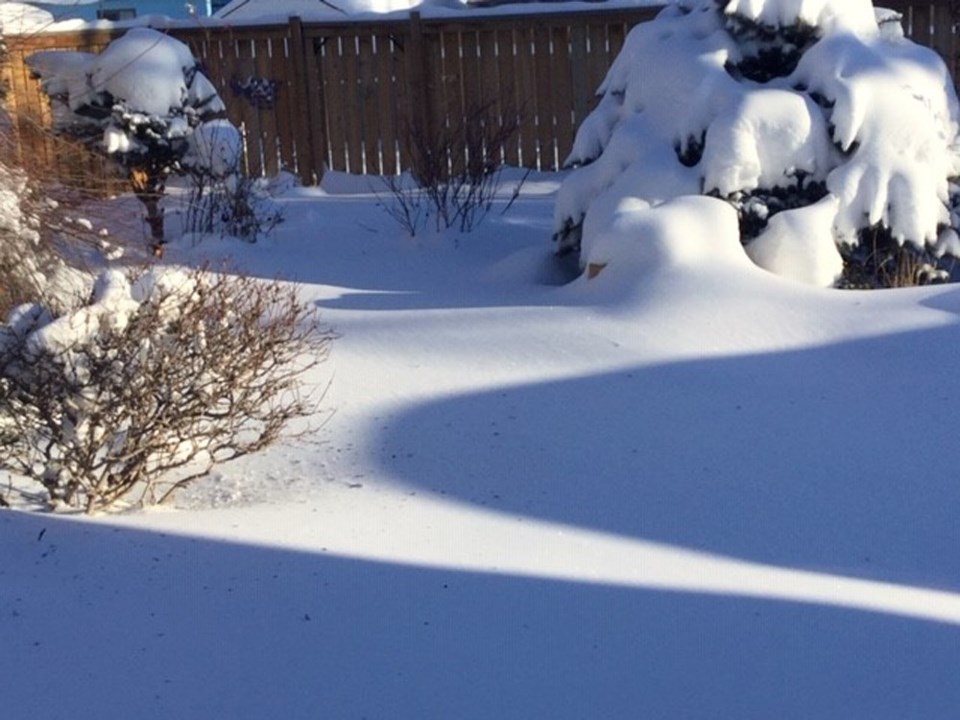YORKTON - Happy new year, gardeners! Doesn’t it seem strange to write “2024”. It reminds us how quickly time goes by…but for us gardeners, that means we are starting to look ahead to spring!
A dear friend of ours who lives in the UK sent us a beautiful garden calendar, and the photos of the various flowers are amazing. The photo for January is one of snowdrops, their delicate flowers bobbing above skiffs of snow. I imagine that the UK must be able to enjoy such beauty in the middle of winter; we can only dream about it!
Have you ever tried to grow snowdrops? They are perennials, growing from bulbs, and are know by their more formal name “galanthus”. They sound like a perfect fit for our climate. They can tolerate cold winters, and don’t even like warmer winters.
We would plant them in the fall, just like most perennial bulbs. They like moist conditions, but well-drained so that their feet aren’t wet. My homework tells me that they would do well under a shrub, or along the side of our houses. But as with all plants, think location, location, location! They don’t bloom for that long, so we should plant them where we will be able to see and enjoy them when they come up.
Snowdrops will grow new bulbs in time, and if they are enjoying conditions that they like, the clumps of snowdrops will get larger and will need to be divided in a few years.
Here’s an interesting factoid. I read that the snowdrop bulbs are sometimes “sold green”. What does this mean? Bulbs such as tulips are dug up when they are dormant, so they are dry. But bulbs like snowdrops are dug up when they still have green stems; it is great for the bulbs because they have a higher water content, but it also means that gardeners have to plant them pretty quickly before they dry out. Do you see the problem for prairie gardeners? We don’t have the luxury of planting bulbs in February, so we must opt for the dry bulbs in the fall instead.
In the language of flowers, the snowdrop is symbolic of new beginnings because they are probably one of the first flowers to bloom in the garden. In certain locations, anyway. Thinking about our own garden, the first thing to bloom is our bergenia. It is indeed a joy to see the stalks of bright pink blooms over the glossy leaves, sometimes while there are still small skiffs of snow around!
Bergenia (aka bergenia cordifolia or heartleaf bergenia) is very hardy and is often called an “evergreen” perennial. Since it originally called Siberia home, it’s no wonder! This is a lovely perennial is one that does well in either sun or part shade. It, too, likes moist conditions, but does not like wet feet. It’s a carefree plant that doesn’t have issues with bugs or disease, and it spreads over time and transplants easily by moving rhizomes. A great garden addition!
Back to snowdrops; we did try planting them one year, very eager to add them to our perennial patch. But we had no luck. Now that I have read more about them, I see that the failure could have been from a variety of reasons, including that the bulbs were too dry and just not viable, (and they didn’t get here till November!); the soil was too dry in that location, or perhaps it was a very harsh winter and cold spring. But we may try them again one day, gardeners don’t like defeat with plants!
The first meeting of the Yorkton and District Horticultural Society will be in March. Be watching for more details later. Visit the hort society at and see what’s ‘coming up’! Thank you to our friends at YTW for their great work! Have a good week!






